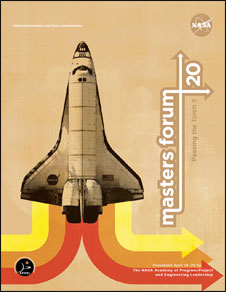Masters Forum 20
Masters Forum 20: Passing the Torch 3
As we approach the final flight of the space shuttle, it is timely to reflect upon many important lessons learned from the formulation, development, operation, and utilization of the space shuttle and its many contributions to science and human exploration including the important role it played in the development of the International Space Station.
Due to overwhelming demand for this highly successful event, Masters Forum 20: Passing the Torch 3 is the final encore to this Masters Forum series. Many of the master practitioners who were involved in the Space Shuttle Program are here with us to share their stories with current and future practitioners within NASA. Additionally, the forum examined key lessons from the Constellation Program and also learned about innovative new space exploration architectures currently under development.
Masters Forum 20 took place April 20 22, 2011, in Melbourne, FL. It was a collaboration between the NASA Academy of Program/Project and Engineering Leadership (APPEL) and the Public Affairs Offices of NASA Headquarters and Kennedy Space Center, who have helped to make this a quality learning experience. This program included several panel discussions, including a special young professionals panel which explored the topics of next generation challenges, the roles of international and academic partners, and early career employee perspectives. Other panels addressed topics including international partnerships, NASAs life sciences research, and new pathways for human spaceflight.
Presenters
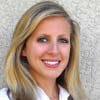 |
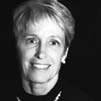 |
 |
 |
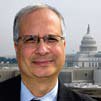 |
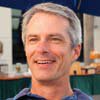 |
 |
 |
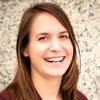 |
 |
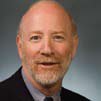 |
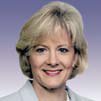 |
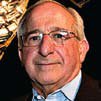 |
 |
 |
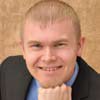 |
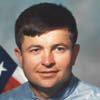 |
 |
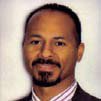 |
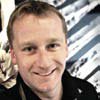 |
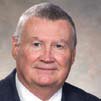 |
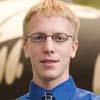 |
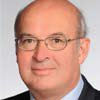 |
 |
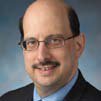 |
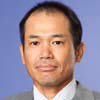 |
 |
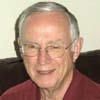 |
||
Presentations
Speakers
- Thomas (Tom) L. Moser began his aerospace career at RCA Missile and Surface Radar Division as a mechanical design engineer. Joining NASA at the Manned Spacecraft Center (Johnson Space Center) in 1963, he held various positions including Apollo subsystem manager for the Command Module and Launch Escape System Structure; orbiter subsystem manager for the structure and thermal protection systems (tiles); orbiter deputy project manager; and director of engineering.
- Jody Singer currently serves in a dual role as the deputy project manager for the Shuttle Propulsion Office (SPO) and as the deputy manager for the Ares Project Office at Marshall Space Flight Center. Appointed deputy project manager of the Shuttle Propulsion Office in October 2007, she has served as the deputy project manager for the Ares Project Office since March of 2010.
- Russel E. Rhodes is a native of the state of Indiana, where he earned a BS in aeronautical engineering from Indiana Institute of Technology in 1958, and a senior member of the American Institute of Aeronautics and Astronautics for more than fifty-five years. He has been employed for more than fifty years at Kennedy Space Center.
- Frank Buzzard spent a distinguished thirty-year career with NASA at the Johnson Space Center, retiring in 2003 after leading the Columbia Investigation Task Force. He then served as the Barrios Technology program manager for the International Space Station (ISS) mission integration contract until 2005. During his NASA career, Mr. Buzzard served as chief engineer of the Space Shuttle, chief engineer of the ISS, and ISS program director/senior system integration manager at NASA Headquarters.
Abstract — As NASA approaches the final flight of the Space Shuttle, it is timely to reflect upon the many important lessons learned from the formulation, development, and operation of the Space Shuttle program. The Space Shuttle represented a dramatic departure from the launch and space vehicles of the preceding Apollo era, with a new focus on routine access to low-Earth orbit, utilizing a high degree of reusabilityand higher flight ratesto attempt to meet its many challenging goals. There is much to be learned from this pioneering effort and, fortunately, many of the master program/project manager practitioners who were involved in the shuttle program are still available to share these stories and lessons learned with current and future practitioners within NASA. This panel will examine the transition from the Apollo era to the shuttle program, the early conceptualization and definition of the shuttle, the development of its many challenging new systems and subsystems, the changing political environment, and its flight and mission operations over the past thirty years since its first flight: STS-1, on April 12, 1981. The panelists have experience in each of these phases of the program, including extensive involvement in Apollo through the development of the Space Shuttle itself, and its subsequent launch, flight, and mission operations, which they will share from their unique perspectives.
Presentations
- Shuttle Program: Formulation, Development, and Operations – Five Lessons Learned – Tom Moser (PDF)
- The Shuttle Program: Formulation, Development, and Operations Launch Development and Ops – Russel E. Rhodes (PDF)
- The Shuttle Propulsion Systems: Mitigating Development Risk through Testing – Jody Singer (PDF)
- Reflections of a Chief Engineer – Frank Buzzard (PDF)
Speakers
- Joe Rothenberg’s career spans forty-six years, twenty-seven years in the aerospace industry and eighteen years with NASA. He is currently an independent consultant with an international client base.
- Scott M. Smith leads the Nutritional Biochemistry Laboratory at Johnson Space Center. The primary goal of this group os to determine the nutritional requirements for extended-duration spaceflight. He is the principal investigator for two ongoing spaceflight experiments on the International Space Station and several ground-based research projects.
- Howard Ross is currently an associate center director for planning and evaluation at Glenn Research Center and specializes in workforce planning, technology development, and new business.
Abstract The Space Shuttle system was initially conceived to operate in partnership with an orbiting space station. Under extreme budget pressures in 1972, NASA was authorized to proceed with the development of the Space Shuttle alone, without the planned space station platform, thus requiring the development of capabilities well beyond its primary space-launch-vehicle role. Hence, the Space Shuttle system design evolved to serve as a reusable spacecraft, or limited-duration orbiting space platform, to conduct diverse missions for the scientific and exploration communities and return to Earth to be reoutfitted to meet other mission requirements. This panel will examine some of the unique contributions the Space Shuttle has made in space sciences, including the remarkable Hubble Space Telescope servicing missions that helped establish and maintain Hubble as one of NASAs premier scientific observatories; in extensive space-life-sciences research, crucial to future human exploration; in unique microgravity sciences projects, including biotechnology, combustion and fire safety, fluid physics, materials science, and fundamental physics; and in Spacelab and other space sciences flight projects experiments. Collectively, these results represent significant advancements in scientific understanding, providing critical insights regarding human health, specific process and technology performance, in-space experiment operations, and technology transfer (spinoffs). The panelists, each having served in key leadership positions that led to these successes, will share their unique experiences in their respective areas.
Presentation
Speakers
- Tommy W. Holloway retired in 2002 as manager of the International Space Station (ISS) program for Johnson Space Center. He was named ISS manager in April 1999 after serving as manager of the Space Shuttle Program (SSP) for nearly four years.
- Ken Cameron became a NASA astronaut in June 1985. His technical assignments included work on tethered satellite payload, flight-software testing in the Shuttle Avionics Integration Laboratory (SAIL), launch-support activities at Kennedy Space Center, and spacecraft communicator in Mission Control. His management assignments include section chief for astronaut software testing in SAIL, astronaut launch-support activities, and operations assistant to the Hubble Repair Mission director.
- Julie Robinson is the program scientist for the International Space Station (ISS) at Johnson Space Center. She serves as the chief scientist for the ISS program, representing all ISS research disciplines and providing information and recommendations both inside and outside the agency. She chairs the ISS Program Science Forum, made up of the senior ISS scientists for each of the primary space agencies comprising the space station international partnership, and represents NASA at the multinational agency ISS User Operations Panel.
Abstract Undoubtedly the greatest technical and engineering achievement of the Space Shuttle is the assembly and development of the International Space Station (ISS)whose entire design, elements, and systems were designed for launch, assembly, and servicing by the shuttle. Indeed, following first element launchthe Russian-launched FGB module that established the initial foundation for stationthe Shuttle manifest has been dominated by ISS requirements, so the shuttle and its mission were also dependent upon ISS. The ISS program has evolved dramatically since its initiation in 1984, having undergone several major redesignsmost notably the creation of what became the ISS after the Vest Committee Review in the early 1990s, which affected the overall program structure and management approach as well as necessitated the need for increased payload performance to meet the requirement of moving the station to an orbital inclination accessible to our new Russian partners. Perhaps most remarkable is the fact that ISS is the creation of eighteen international partners whose hardware and systems often met for the first time in orbit. As we approach assembly complete, we are now entering a decade of ISS utilization, which will afford the scientific and human exploration communities an opportunity to fully exploit the promise of this remarkable achievement, and to establish the foundation for exploration beyond the boundaries on low-Earth orbit. In this regard, the ISS is a model for future human exploration missions, which undoubtedly will be dependent upon international collaboration on a global scale. Our panelists will examine the lessons learned from the development of ISS, review our evolving international partnership, and peer into the future to anticipate the great promise of ISS
Presentations
Speakers
- Edward Hoffman is responsible for the development of program and project leaders and teams within NASA, including the development of a comprehensive program and project management training curriculum, consulting services for project management teams, lessons learned, knowledge capture, and research and special studies on program and project management.
- Rupert Gerzer has been head of the DLR Institute of Aerospace Medicine as well as professor and director at the Institute of Aerospace Medicine at Aachen University since 1992. Previously, he was president of the German Society of Aerospace Medicine from 1999 to 2001. He is trustee to the International Academy of Astronautics and is coeditor of Acta Astronautica.
- Shinobu Doi joined the Japan Aerospace Exploration Agency ( JAXA, formerly NASDA) in 1994. Over fifteen years, he worked on the development and integration of space robotics, berthing mechanisms, and the airlock on the Japanese Experiment Module (JEM) of the International Space Station. He is now responsible for integrating and managing the mission and sustaining engineering for JEM, especially external systems. He also acts as a flight director of the JEM to support flight operations.
Abstract Throughout most of NASAs history, international collaboration has played an important role in both its science and human spaceflight programs. This collaboration has become the new norm in space, as more than sixty international space agencies increasingly work together in a broad range of space-related activities. Nearly two-thirds of NASAs space science missions now involve international collaboration on many levels, while human spaceflightwith its current focus on International Space Station and future exploration missionsis now fully international in scope. The Space Shuttle program helped facilitate this evolution with the involvement of a number of international flight projects, with the participation of astronauts from many nations that flew on its missions, and with the use of our international partners unique capabilities, such as the Space Shuttles Canadian robotic arm and the German Space Agencys (DLR) Space Lab. The International Space Station has, from its very beginning, been a truly international endeavor, involving the work of eighteen space-faring nations that participated in its development. In this regard, the station is a model for future human exploration missions, which undoubtedly will be dependent upon global international collaboration. Our international panelists will examine the lessons learned from these collaborations and anticipate how we might benefit from these lessons, from their unique international perspectives, in our evolving partnerships.
Presentation
- ATV #1 Jules Verne Control Centre – Lionel Baize (PDF)
- International Project Management Committee Overview and Activities – Ed Hoffman (PDF)
- German Space Life Sciences Program – Rupert Gerzer (PDF)
- Japans Major Contributions to the ISS – Shinobu Doi (PDF)
- Indian Space Research Organization Overview – Sreedhara Panicker Somanath (PDF)
- Phil Sumrall joined the Marshall Space Flight Center in 1962 as a member of the Von Braun team that developed the Saturn family of launch vehicles used in the Apollo program. Later he worked on Saturn improvement studies and other advanced concepts, including launch vehicles, the Hubble Space Telescope, the Skylab space station, and the Space Shuttle concept definition.
- T. Cleon Lacefield is currently the vice president and program manager for the Orion Crew Exploration Vehicle (CEV) program at Lockheed Martin Space Systems. He has more than thirty-four years of aerospace experience in design, development, and operations of flight hardware programs. In addition, Mr. Lacefield served as a NASA flight director in Mission Control at Johnson Space Center.
Abstract Established in response to NASAs former Vision for Space Exploration and its early emphasis on lunar exploration, the Constellation program had several major program elements, including the Ares I launch and Ares V heavy-lift launch vehicles, the Orion crew exploration vehicle (CEV), and the Altair lunar landing system. The Ares launch systems development, managed by Marshall Space Flight Center, was led as an in-house project; whereas the Johnson Space Centerled Orion CEV development was awarded to Lockheed Martin. Considerable progress was made in the development of these capabilitiesthe first major space transportation systems development undertaken by NASA since the Space Shuttle programand many of the lessons that have been learned as a result of these projects will be examined during this session.
Presentations
- Michael Bell is the program manager for NASAs lessons learned program and serves as the lessons learned center data manager for the Kennedy Space Center. In this position he promotes the collection and sharing of lessons learned and the use of the Lessons Learned Information System as a tool to improve project performance and promote technical excellence.Edward W. Rogers is currently the chief knowledge officer at Goddard Space Flight Center. He joined NASA in May 2003 as the centers chief knowledge architect, working first in the Safety and Mission Assurance Directorate and then in the Office of Mission Success. He became the chief knowledge officer for the center in 2006.
Matthew Kohut leads the communications team for the NASA Academy of Program/Project and Engineering Leadership. He serves as the editor of the ASK the Academy e-newsletter and oversees the development of the Academys case studies.
Abstract NASA has established a formal process to collect, document, and share lessons learned through the Lessons Learned Information System (LLIS), which was developed as a new tool to improve project performance and promote technical excellence through the development of case studies and documentation of best practices, and to share this knowledge throughout the agency. The LLIS is intended to capture experiences from successful tests or missions, as well as from mishaps or failures, to provide excellent knowledge-based sources for learning. This session will discuss this process and also describe the methodology for developing case studies, with a focus on how to use them effectively as learning tools for knowledge sharing and project implementation. The session will also provide an overview of how to mine NASAs various archives and databases for highly relevant case studies, lessons learned, and best practices that are available to assist the program/project management and engineering communities in learning from, and applying, this knowledge in their projects.
Presentation
- Heather L. Rarick has been a flight director for the International Space Station (ISS) since 2006. She has served as lead for ISS Expedition 17 (AprilOctober 2008) and the Space Shuttle/ISS mission of STS-128/17A (September 2009). Ms. Rarick is currently on a one-year assignment at NASA Headquarters, Office of Chief Engineer.
- Carole Rickard Hedden is Aviation Weeks special projects editor and president of The Write Stuff. She leads Aviation Weeks annual Workforce Study research and editorial product, and Aviation Weeks Program Management/Leadership initiative. In addition, she is the lead for Aviation Weeks executive roundtables and summit, and editorial director for military conferences.
- Nicholas Skytland is director of NASAs Open Government Initiative. Combining elements of space exploration, science, technology, visual art, and storytelling, he is well known for many of his presentations promoting NASA, the human space program, participatory exploration, and the Open Government initiative. He has worked at NASA for ten years, previously as a project manager in NASAs Human Research Program.
- Philip D. Harris is a flight planner and international operations engineer at Johnson Space Center. As part of his responsibilities, he works with NASAs domestic and international partners in developing planning and operations products for the International Space Station (ISS) program.
- Anne Caraccio is a chemical engineer for the Materials Science Division of the Engineering Directorate at Kennedy Space Center. She received her BS and MS in chemical engineering from Manhattan College and graduated in December 2010. She came onboard with NASA in February 2011 after successfully completing three semesters in the NASA Co-op Program.
- Danielle Wood is a doctoral candidate at the Massachusetts Institute of Technology (MIT), where she studies aerospace engineering, technology policy, and international development. She studies within MITs Engineering Systems Division, a multidisciplinary academic community that combines engineering, management, and social science to address complex, socio-technical issues in society.
- Justin Kugler is a utilization relationship manager for the International Space Station (ISS) National Laboratory Office at Johnson Space Center and is responsible for facilitating partnerships with industry and academia that take advantage of the unique environment onboard ISS. He also coordinates the National Lab Office social media accounts and has served on center- and agency-wide initiatives to expand innovation, inclusion, and openness.
- Haley Stephenson serves as the staff writer for ASK the Academy. She also writes case studies and white papers and is a contributing editor to ASK Magazine.
Abstract Developing NASAs workforce of young professionals so they can effectively execute the challenging programs that lay ahead is one of the most important issues we face as an agency. As many of NASAs senior master practitioners are approaching retirement, it is essential to understand the needs, interests, motivations, and unique capabilities of the young-professional community, and to use this understanding to provide opportunities for their development and help them prepare to meet the new challenges they will face in the increasingly technically complex, and internationally diverse, programs of the future.
This session will examine these challenges from the perspectives of the broader aerospace community, through a recently completed aerospace technical-workforce-development study conducted in partnership with Aviation Week, and from the perspectives of a panel of young professionals. The session will also provide an overview of how the community is coming together through grassroots volunteer organizations like NASA Forward, as well as the steps the Academy is taking to meet the need for young-professional development.
Presentations
- John M. Olson is the director of the Directorate Integration Office in the Exploration Systems Mission Directorate at NASA Headquarters in Washington, D.C. He is responsible for a broad range of exploration integration activities, architectures, processes, plans, and studies that span from international, commercial, interagency, and technology partnerships to synergy between science and exploration.Garry Lyles brings thirty-five years experience in design analysis, system engineering, and program management to his position as associate director for technical management in the Engineering Directorate of the Marshall Space Flight Center. His previous experience includes chief engineer at the project (Space Shuttle main engine) and program (Exploration Systems Mission Directorate) levels.
Maria A. Collura serves as the acting deputy director in the Space Transportation Planning Office at Kennedy Space Center, where she is responsible for assisting in the development of a national capability to provide NASA crew transportation to and from the International Space Station and enable the commercial industry to provide human access to low-Earth orbit.
Abstract This session will provide an overview of a number of new initiatives that will ultimately change the way NASA will conduct future exploration missions. Topics to be discussed will include new approaches to space transportation systems that will change the way we provide access to space, an overview of the recently completed study results of space-exploration-system architecture, and a review of a current space-transportation-system study that is defining a next-generation transportation system that will enable exploration beyond low-Earth orbit. The session will also provide an overview of the Administrations plan to help mature the commercial launch industry for Earth-to-orbit missions following the end of the Space Shuttle era, and to exploit this emerging capability for International Space Station resupply and crew rotations in the coming decade.
Presentations






